This essay was originally published in The Public Domain Review under a Creative Commons License. Please see their rules for reuse.
From that famed night of ghost-stories in a Lake Geneva villa in 1816, as well as Frankenstein’s monster, there arose that other great figure of 19th-century gothic fiction — the vampire — a creation of Lord Byron’s personal physician John Polidori. Andrew McConnell Stott explores how a fractious relationship between Polidori and his poet employer lies behind the tale, with Byron himself providing a model for the blood-sucking aristocratic figure of the legend we are familiar with today.
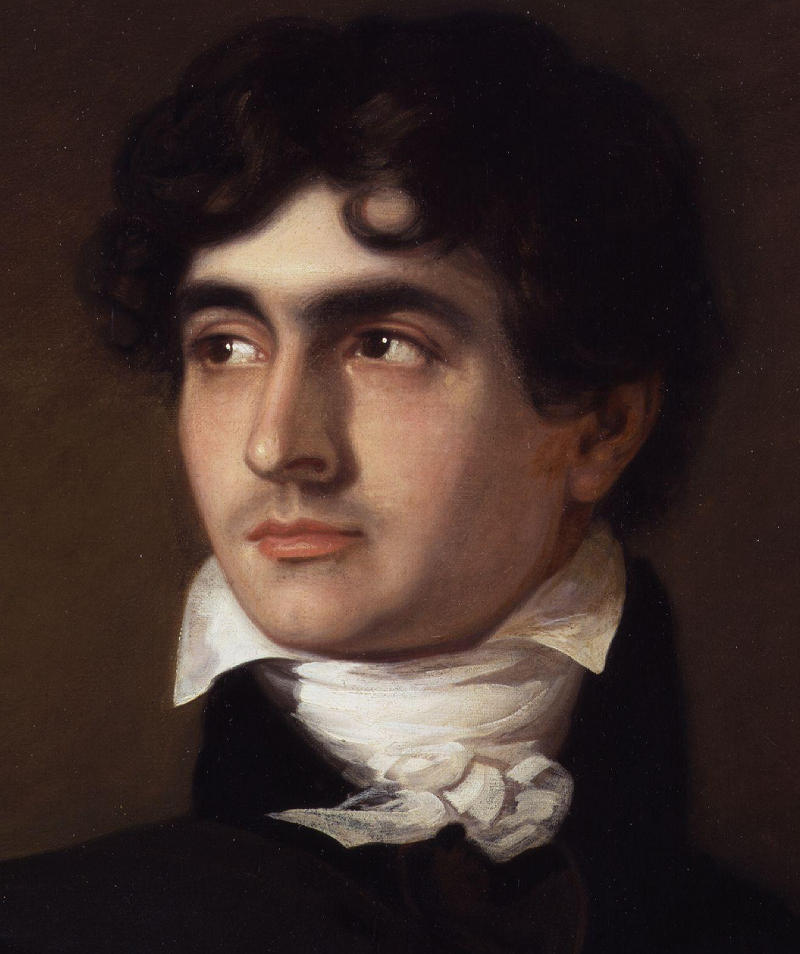
A vampire is a thirsty thing, spreading metaphors like antigens through its victim’s blood. It is a rare situation that is not revealingly defamiliarized by the introduction of a vampiric motif, whether it be migration and industrial change in Dracula, adolescent sexuality in Twilight, or racism in True Blood. Beyond undead life and the knack of becoming a bat, the vampire’s true power is its ability to induce intense paranoia about the nature of social relations to ask, “who are the real bloodsuckers?”
This is certainly the case with the first fully realized vampire story in English, John William Polidori’s 1819 story, “The Vampyre.” It is Polidori’s text that establishes the vampire as we know it via a reimagining of the feral mud-caked creatures of southeastern European legend as the elegant and magnetic denizens of cosmopolitan assemblies and polite drawing rooms.
“The Vampyre” is a product of 1816, the “year without summer,” in which Lord Byron left England in the wake of a disintegrating marriage and rumours of incest, sodomy and madness, to travel to the banks of Lake Geneva and there loiter with Percy and Mary Shelley (then still Mary Godwin). Polidori served as Byron’s travelling physician, and played an active role in the summer’s tensions and rivalries, as well as participating in the famous night of ghost stories that produced Mary Shelley’s “hideous progeny,” Frankenstein; or, The Modern Prometheus.
Like Frankenstein, “The Vampyre” draws extensively on the mood at Byron’s Villa Diodati. But whereas Mary Shelley incorporated the orchestral thunderstorms that illuminated the lake and the sublime mountain scenery that served as a backdrop to Victor Frankenstein’s struggles, Polidori’s text is woven from the invisible dynamics of the Byron-Shelley circle, and especially the humiliations he suffered at Byron’s hand.
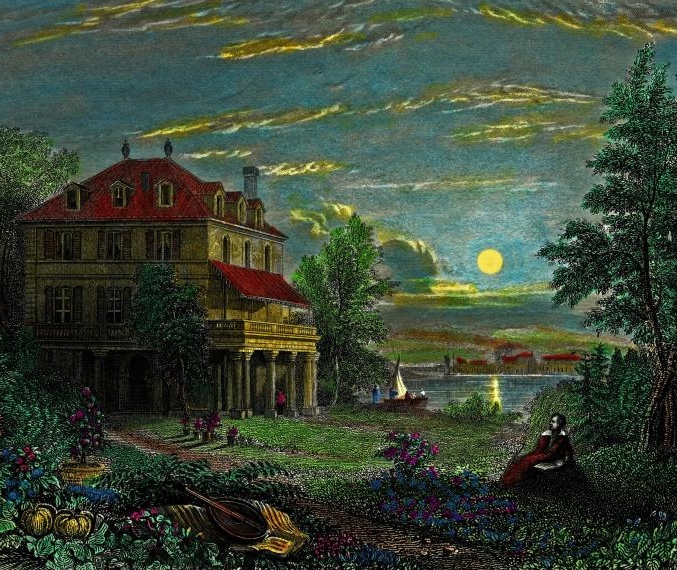
John Polidori (1795-1821) was born in Soho, the eldest son of an English mother and an Italian writer, translator, and literary jack-of-all-trades. Raised to great precocity in a multi-lingual and hyper-literate home, he was sent to board at the Catholic Ampleforth College at the age of eight. Then just a remote and drafty lodge housing twelve boys and twenty-four Benedictine monks, Ampleforth provided instruction in history, languages, and the minutiae of Catholic devotion. Given this intense and closeted environment, it is no wonder that John should dream of entering the priesthood, but his father had chosen a different path for his son, pulling him from school at the age of fifteen to attend the university of Edinburgh to study medicine.
Medical education in the early nineteenth century was largely based around the study of “antiphlogistics”– learning how to master the various ways of ridding the body of noxious substances in the quickest way possible — and so John became skilled in blood-letting, vomiting, enemas, blistering, and plunge-baths. But Polidori hated medicine. A restless loner, he rejected his classmates as “automatons,” while he himself dreamt of achieving glory, first on the battlefield fighting on behalf of Italy as it sought to repel the invading armies of Napoleon, and then through a growing attachment to literature. Thanks to the success Byron had achieved with the publication of his poem Childe Harold in 1812, it was only natural that young men in the early nineteenth century should conceive of poetry as not only a creative outlet, but as an avenue to fame, riches and sexual plenty. Under the long-distance mentorship of William Taylor of Norwich, a once notable, but now near-derelict essayist who was attracted to John’s remarkable good looks, Polidori began to dabble in literature. His father, who knew the more likely privations of a literary life, ordered him to stick to his studies, and John obeyed, fulfilling a family dynamic that remained unchanged throughout his life — bowing to his father’s wishes while inwardly caviling at the restraints they placed upon him.
Where most students wrote dissertations on the circulation of the blood or assorted fevers, John concluded his education by writing a dissertation on the uncanny phenomenon of sleep-walking that was heavily influenced by the French encyclopedists, before returning to London a newly-minted doctor at the tender age of twenty. Unfortunately, in order to practice in the capital it was necessary to be at least twenty six years old. It was while contemplating this stalling impediment that John was offered the job of physician to Lord Byron. John’s father, who had once been the secretary to the vain and splenetic Italian tragedian, Vittorio Alfieri, ordered him not to take the position, while across town, Byron’s friend John Cam Hobhouse counseled the poet against employing the vain young man with the funny name. Neither warning was sufficient, and together Byron and Polidori left for the Continent on St. George’s Day, 1816.
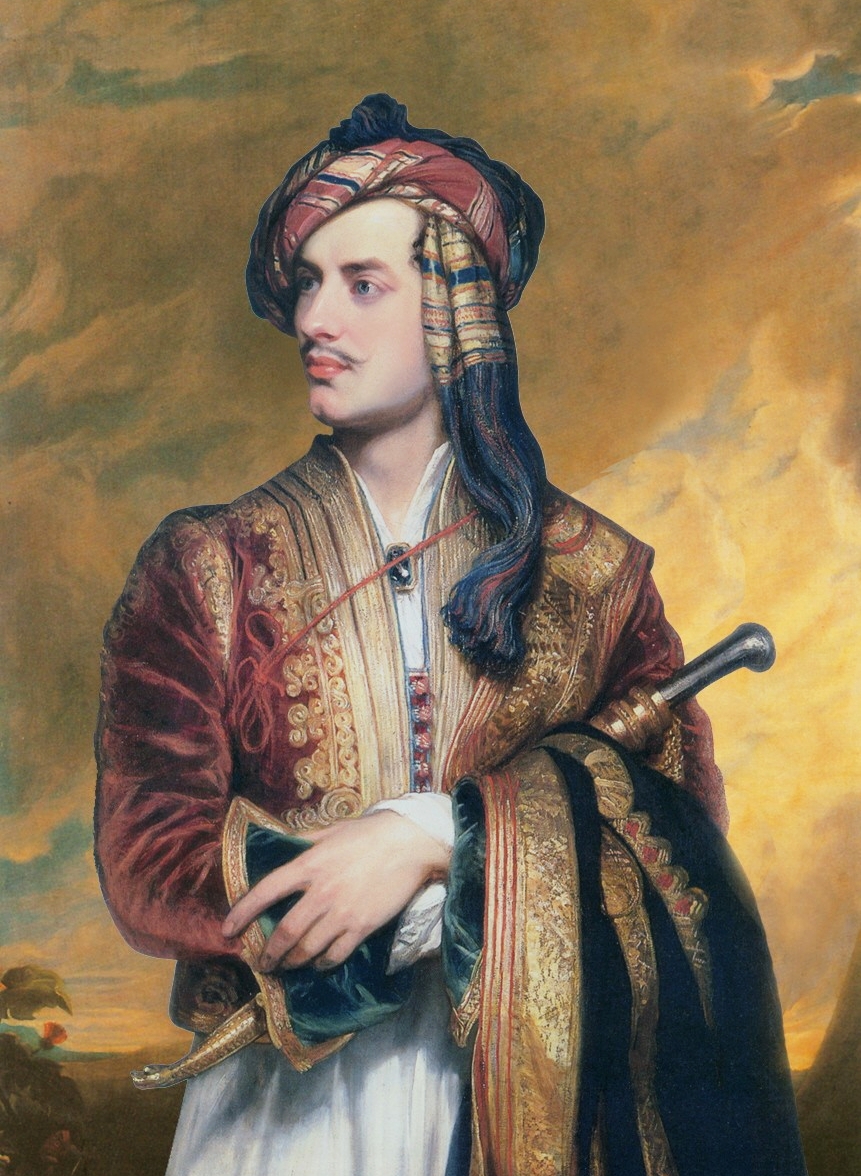
Their relationship got off to an uneasy start in Dover as they awaited a convivial tide. Over dinner, John had invited Byron to read from a play he had written, and Byron obliged, but in the company of garrulous friends who had come to see him off, found it impossible to resist the urge to make them laugh one last time. Polidori, an outsider, an employee, was forced to sit and listen as Byron lampooned his sophomoric efforts and reduced the table to fits of giggles. Furious, John stormed off to pace the streets of Dover.
Away from Byron’s friends, things improved a little, with John writing to his sister from Brussels to say that “I am with him on the footing of an equal.” The democratic idyll did not last long, however, with Byron quickly losing patience with his doctor’s bouts of travel sickness, and John resenting his employer’s undemocratic arrogance. “Pray, what is there excepting writing that I cannot do better than you?” John asked Byron while stopped at an inn overlooking the Rhine. “There were three things, answered Byron, calmly. ‘First,’ he said, ‘I can hit with a pistol the keyhole of that door — Secondly, I can swim across that river to yonder point — and thirdly, I can give you a damned good thrashing.’”
These feelings of resentment only grew, as John felt increasingly overshadowed in the famous man’s company, with those they met instantly gravitating towards celebrity while he remained “like a star in the halo of the moon, invisible.” At the same time, the doctor’s petulance provoked Byron, whose wit was often cruel and rarely let an opportunity pass to mock his employee or put him in his place. In time, John began to feel that his own sense of self was being drained by his proximity to the poet. Increasingly, he sought to distance himself and in mid-June, made a half-hearted attempt at suicide.
It was no great leap for Polidori to believe that Byron was sucking the life from him, just as others had accused Byron of possessing a charismatic power that eclipsed their own identities. Amelia Opie, one of the many women Byron had charmed, described him as having “such a voice as the devil tempted Eve with; you feared its fascination the moment you heard it,” a mesmeric quality that critics also found in his verse, which had, according to the critic Thomas Jones de Powis, “the facility of…bringing the minds of his readers into a state of vassalage or subjection.”
But the most overt example of Byron as the devourer of souls was a novel John read over the course of the summer — Glenarvon by Lady Caroline Lamb. Byron and Lamb had enjoyed a brief and transgressive affair until he, somewhat rattled by the vivid expanse of her erotic imagination, had called it off. The novel is a thinly veiled portrait of the relationship set in a lonely castle during the Irish Rebellion of 1798, that interweaves breathless Gothic fiction with the wayward love of Calantha for the Irish rebel Lord Glenarvon. Glenarvon is a brooding anti-hero who dresses as a monk, stalks ruined priories, and howls like a wolf at the moon. His face glowers “as if the soul of passion had been stamped and printed upon every feature,” possessing the ability to enslave her. “Weep,” he cries, binding her ever tighter to him, “I like to see your tears; they are the last tears of expiring virtue. Henceforward you will shed no more.” Calantha is powerless. “My love is death.”
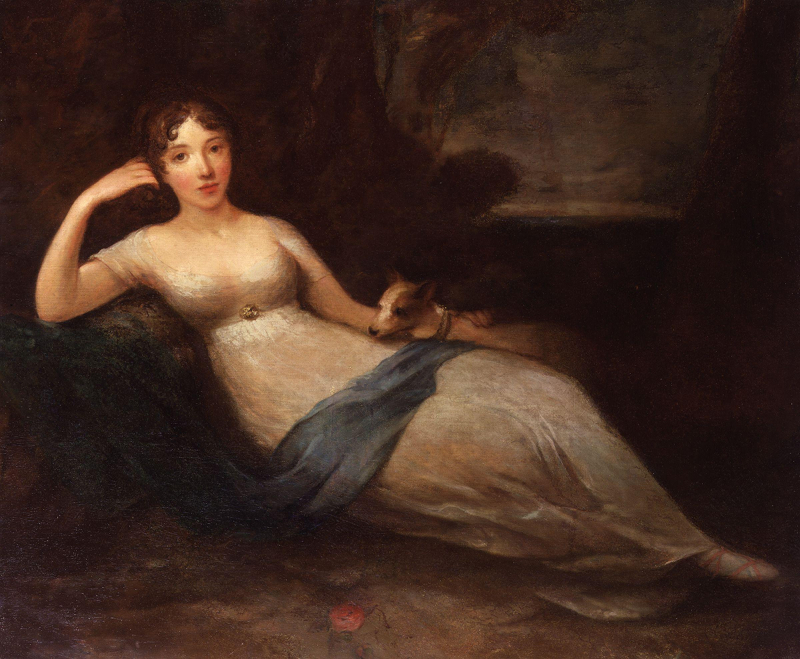
That Polidori took inspiration from Lamb is revealed in the name he gives his villain — Lord Ruthven, one of Glenarvon’s various ancestral titles. Polidori’s Ruthven also inhabits Glenarvon’s aristocratic milieu as a member of the bon ton. He is a pale and fascinating nobleman who appears in London “more remarkable for his singularities, than for his rank,” and who incites awe amongst the ranks of fashionable ladies by virtue of his melancholy air and “reputation of a winning tongue.”
In “The Vampyre,” Ruthven befriends a young gentleman named Aubrey, whom he invites to accompany him on a journey to Greece. Once there, Aubrey falls in love with Ianthe, a beautiful peasant girl who recounts the legend of the vampire but is brutally murdered soon after. Aubrey comes to suspect Ruthven, but the mysterious aristocrat is shot by bandits before the truth can be revealed. As Ruthven lays dying, he manages to extract a promise from the young man, asking him not to announce his death in England for a year and a day. Aubrey agrees, and Ruthven literally dies laughing.
After a long and meandering journey home, the sad and raddled Aubrey is finally able to return to society, where he is horrified to discover Ruthven alive and well. “Remember your oath,” whispers the man who has died in his arms, thus driving Aubrey so far from his wits that he succumbs to a protracted illness. In the meantime, Aubrey’s sister is engaged to be married, and though he has yet to meet the groom, it slowly dawns on him that it must be Ruthven. Impatient for his oath to expire and growing weaker by the day, he finally sends his assistants to her rescue only to discover they are too late: “Lord Ruthven had disappeared, and Aubrey’s sister had glutted the thirst of a VAMPYRE!”
Knowing the context of Polidori’s story, it is hard not to read “The Vampyre” as an allegory of the doctor’s relationship with Byron, a text that is seamed with the mocking laughter of a man possessed of the power to debilitate through the force of personality alone. Furthermore, it rewrites the well-known story of Byron’s success since the publication of Childe Harold, wherein a young nobleman goes abroad and returns filled with capacious understanding of himself and the world, by showing that his melancholy air is a deceit, a mendacious con perpetuated on a gullible claque of fools for the purpose of their exploitation. As a meditation on the degeneracy of a society that has encouraged the excesses of celebrity to such an extent that it has been allowed to dwarf the higher values and enable the abuse of the virtuous and the innocent, it damns absolutely the superficial lure of fame.
Rather than providing a creative outlet for Polidori, the publication of “The Vampyre” only served to compound his humiliation. Although the text was similarly prompted by the ghost story competition that inspired Mary Shelley so ably, John only completed his story for the pleasure of a friend outside of the Byron-Shelley circle. The manuscript lay forgotten for three years until finally coming into the hands of the disreputable journalist Henry Colburn, who published it in his New Monthly Magazine under the title “The Vampyre: A Tale by Lord Byron.”
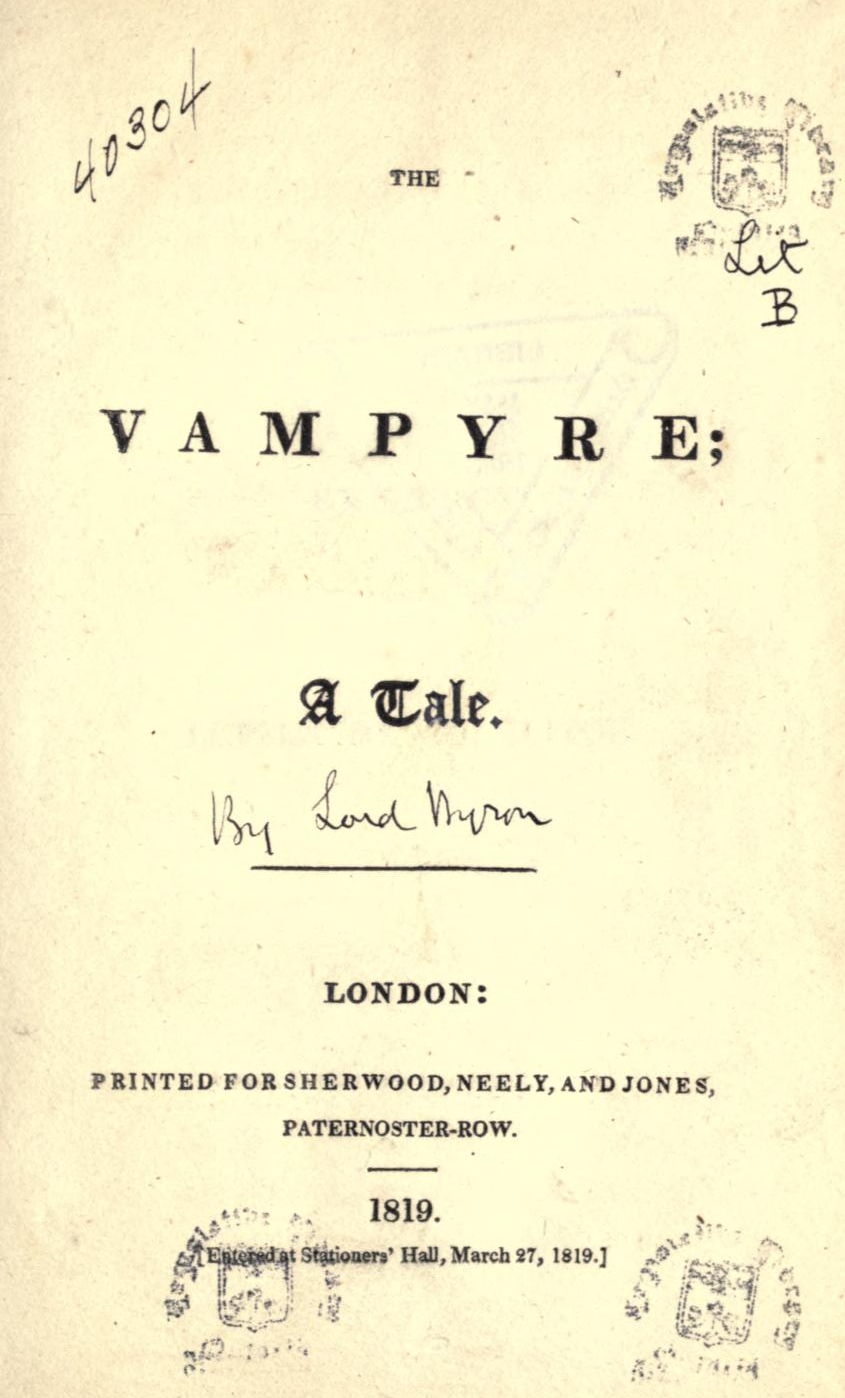
The response was predictably lively. Goethe proclaimed it Byron’s greatest ever work, and popular hardback editions went through numerous reprintings, leaving Polidori scrambling to assert his rights as its author in the face of accusations that he was either a plagiarist or misusing Byron’s name to further his own reputation. John tried to take control by preparing his own edition, but the public was not interested, and disgusted with the literary life, he attempted to rejoin Ampleforth and train as a monk. Still “The Vampyre” plagued him as his application was denied because of “certain publications which I have seen,” wrote the Prior, “and of which I must tell [you] as a friend, I wish you had not been the author.” Polidori enrolled to study law using his mother’s maiden name, but, finding no appetite for it, fell into gambling. With the shadow of Byron making everything he did seem paltry and derivative, and the weight of rejection impressing itself on him like a judgment on his being, John Polidori took his own life at the age of twenty five by drinking a beaker of cyanide.
“Poor Polidori,” wrote Byron when he heard the news, “it seems that disappointment was the cause of this rash act. He had entertained too sanguine hopes of literary fame.”
Andrew McConnell Stott is the author of Comedy (Routledge, 2005; 2nd edn, 2014) and The Pantomime Life of Joseph Grimaldi (Canongate, 2009), which won the Royal Society of Literature Jerwood Prize for Non-Fiction and was named as one of the Guardian’s “Books of the Year” for 2010. In 2013 he published The Poet and the Vampyre: The Curse of Byron and the Birth of Literature’s Greatest Monsters (Canongate/Pegasus 2013), which was a best book pick of 2013 for both The Big Issue and The Sunday Times.
Links to Public Domain Works
Further Reading
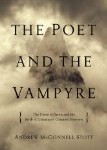
The Poet and the Vampyre: The Curse of Byron and the Birth of Literature’s Greatest Monsters (Pegasus, 2014) by Andrew McConnell Stott
A look at the shared lives of Byron, the Shelleys, and John Polidori during their time in Geneva, when literary works such as Frankenstein and The Vampyre were begun.
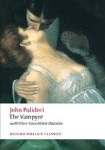
The Vampyre and Other Tales of the Macabre (Oxford University Press, 2008) by John Polidiri and others
A collection of fourteen tales of the mysterious and the macabre, including ‘The Vampyre’ by John Polidori as well as works by Joseph Sheridan LeFanu, Letitia Landon, and others.